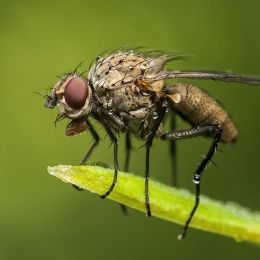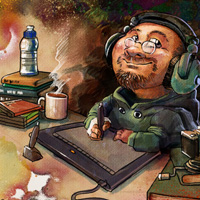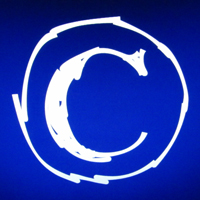- photo contests ▼
- photoshop contests ▼
- Tutorials ▼
- Social ▼Contact options
- Stats ▼Results and stats
- More ▼
- Help ▼Help and rules
- Login
1 - Basic Scheme2 - GIMP Tutorial

We begin this month with a look at GIMP. One of GIMP's strong points has always been its scriptability. In fact, it's widely acknowledged to be one of the cooler features of GIMP. But when it comes right down to it, there really are not that many people who can honestly say, "I know Script-Fu."
submitted: 5 years and 3573 days ago
2 - Basic Scheme - GIMP Tutorial

One of the wonderful features of GIMP is that it all its functionality may be accessed through scripting. The major scripting language for GIMP that has been attached to it today is Scheme. This document will try to be a brief introduction to Scheme, just teaching the essentials in order to write Script-Fu scripts, without getting into the programming language theory that is so typical of other Scheme references.
submitted: 5 years and 3573 days ago
3 - GIMP Batch Mode - GIMP Tutorial

GIMP comes with a so-called batch mode that allows you to do image processing from the command line. It also makes it easy to apply the same set of operations to a number of images. We have got a lot of questions on the mailing-lists on how to use the batch mode and this small page tries to explain the basics to you.
submitted: 5 years and 3573 days ago
4 - Perl Debugged - GIMP Tutorial

The Perl module for GIMP is a nice evolution of the scripting interface of GIMP. It removes the dependence on the relatively rarely encountered scheme language of script-fu and replaces it with one that is familiar to a much larger audience. In doing so, the perl interface to GIMP also can take advantage of many of the features that have been added to perl over the years.
Our aim in creating this tutorial is to make debugging scripts easier. We'll touch on the facilities provided by the Gimp module, and then focus on using the perl debugger to interactively develop scripts.
submitted: 5 years and 3573 days ago
5 - Basic Perl - GIMP Tutorial

So far most of the script programming for GIMP has been done using Scheme through Script-Fu. Unfortunately the Scheme environment GIMP provides is very primitive, e.g. without any reasonable error handling. Furthermore, must users are not familiar with Scheme as a language. Some users may therefore prefer to write scripts for the GIMP in Perl.
Perl as a language is probably more familiar to web-literate users as it is the major language for writing CGI scripts. Now, GIMP scripts may also be written with Perl. This tutorial will describe how to write such plug-ins and scripts for GIMP.
submitted: 5 years and 3573 days ago
6 - Image Map - GIMP Tutorial

In my opinion, it is hard to come up with a good application for an image map. For many online applications, it is simply overkill. However, to emulate the behavior of a GIMP Dialog seems to be a perfect place for this powerful web tool.
The tutorial slices this image further, but since the GIMP Image Map Plug-in and image maps in general use coordinates, we can use a less complicated table for this.
submitted: 5 years and 3573 days ago
7 - Perlotine - GIMP Tutorial
8 - Smart Sharpening - GIMP Tutorial

In this tutorial we'll show you how to do smart sharpening of your images. Applying an unsharp mask to an entire image is not always appropriate. A really good example of this is when you have an image with a lot of high ISO noise or film grain; applying across-the-board sharpening will enhance the noise/grain and make it even more visible, especially in large prints. Often there will be large areas of the image that you know you don't want to sharpen (e.g. a blue sky--the blue channel tends to get a lot of noise).
submitted: 5 years and 3573 days ago
9 - Blending Exposures - GIMP Tutorial

In this tutorial we'll show you how to do blend two different exposures of the same scene that you would like to combine to get the best parts of both images. This procedure works best if you have:
1. (obviously) have shot two different exposures that would be pleasing to combine,
2. had the camera mounted on a tripod (not strictly necessary, but helps greatly in aligning the images),
3. the scenes are not too different at the boundaries of the blend. If the scene has changed too much (trees blowing, waves, people or cars moving, etc. between the images), especially at or near the "seams" of the blend, it will make the blend more difficult.
submitted: 5 years and 3573 days ago
10 - Salvaging an Image with Blown Out Highlights - GIMP Tutorial

In this tutorial we'll show you how to salvage an image that has blown out highlights. This is a problem that is familiar to photographers shooting transparency film, which has an effective contrast range of about 5 stops. If you are not careful with your exposure you can easily lose all detail in your highlight areas, with no way to get it back: they "blow out" to clear (white).
submitted: 5 years and 3573 days ago







